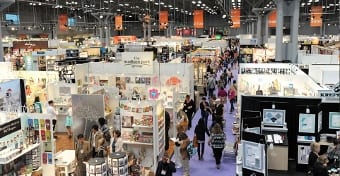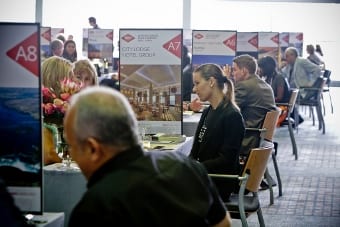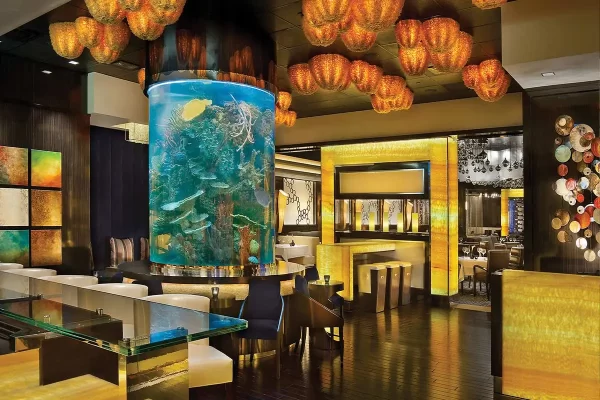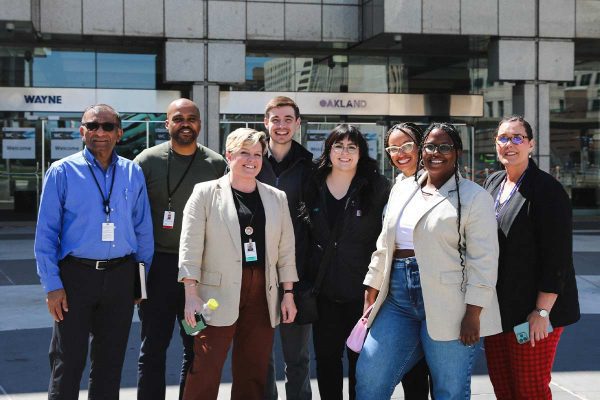Tweet
Depending on the agreement, co-located events can bring double the promotions, products and prospects as well as create an environment in which general contractor firms either work with their competitors or single-handedly service multiple tradeshows.
Co-located events can be identified by two or more tradeshows taking place at the same venue. Some of these shows combine their educational sessions as well as networking events.
Others keep their show floors separate but create a new event to bring together both sets of attendees. A perfect example of this occurred in February when National Kitchen & Bath Association and National Association of Home Builders created Design & Construction Week at the Las Vegas Convention Center to unite each aspect of the remodeling industry.

There are also shows that didn’t originally plan to co-locate but decided to offer one-badge access to both shows upon discovering each was simultaneously held at the same venue. This is what Emerald Expositions and Exhibitor Media Group did in March when they realized they had many of the same exhibitors at GlobalShop and EXHIBITOR, respectively.
“Co-location agreements can be set up lots of different ways. Badges could mean access to all shows, and revenue is split, or badges could be needed for each show. Shows looking to co-locate certainly need to weigh all the strategic and tactical pros and cons before entering agreements,” recommended Randy Pekowski, vice president and chief operating officer, The Expo Group.
With the Single Source general contractor firm for nearly 20 years, Pekowski said logistics can also vary for general contractors working co-located events. This is especially true if there is more than one general contractor company serving multiple events at the same venue.
“When two different contractors are producing the co-located event, they need to sync exhibitor move-in times, marshalling yard operating times and union stewards, to name a few,” he explained. “Logistical plans for move-in and move-out depend on the size of show, amount of freight, layout of facilities and a number of other factors. For co-locations, in general, logistics are the same except for more communication and collaboration throughout all phases — pre-planning, on-site and post-show.”
This collaboration of more than one general contractor firm naturally increases market competitiveness, raising the contractors’ performance bar, according to Pekowski. There are also a set of expectations for a single general contractor firm serving a co-located event.

“If one contractor has two clients co-locating, their contracts and expectations are different. It is important to be sure the show management companies or associations are being served appropriately,” explained Pekowski.
This scenario may not be an issue if the general contractor is serving co-located events owned and operated by the same company, which is the case with Emerald Expositions’ portfolio of shows. After finalizing its acquisition of George Little Management (GLM) this past January, Emerald looked for more cross-marketing initiatives to benefit exhibitors and attendees as well as double the promotions of their shows. Company officials realized their Imprinted Sportswear Show would perfectly complement Surf Expo and planned the co-location for this September.
“If the same contractor is producing both shows, economies of scale could occur, thus reducing staffing compared to two individually produced events,” stated Pekowski. “There can be savings, especially with décor, but it’s important to be sure the branding messages resonate for all.”
Being seen across several industries, such as packaging machinery, home builders, restaurants and food, co-located events are on the rise. New co-location agreements are being announced constantly and Pekowski explained why.
“Shows co-locate for better alignment of purpose, convenience and cost. Show organizers are responsible for bringing together buyers and sellers. To do so, they must constantly look at the attendees they are targeting to satisfy the exhibitors and vice versa,” he added. “Other shows have done it for cost savings and survival due to major disruptions in their industry that changed the landscape so much it longer made sense to host a stand-alone event.”

Co-located events also occur, according to Pekowski, when smaller shows serving a certain niche of the overall market join with larger tradeshows, or if tradeshows serving two parts of the supply-chain come together to avoid direct competition.
This explanation could be why International Contemporary Furniture Fair, National Stationery Show, SURTEX and the Creative & Lifestyle Arts tradeshow joined together at Jacob K. Javits Convention Center in New York. The debut of the multi-show format was a success for then show portfolio owner and operator, GLM. In 2013, GLM’s goal was to improve the flow of specialty merchandise, and this four-show format touched every part of the supply chain. Now that these shows are in Emerald Expositions’ hands, the co-location continues.
A major show organizer with a large global events portfolio, Reed Travel Exhibitions collaborated with its African counterpart, Thebe Reed Exhibitions, to create a three-show format called Africa Travel Week at the Cape Town International Convention Center. Wrapping up this past May, the co-location brought together professionals from all levels of the travel industry and highlighted the diversity and business opportunities in Africa.





























